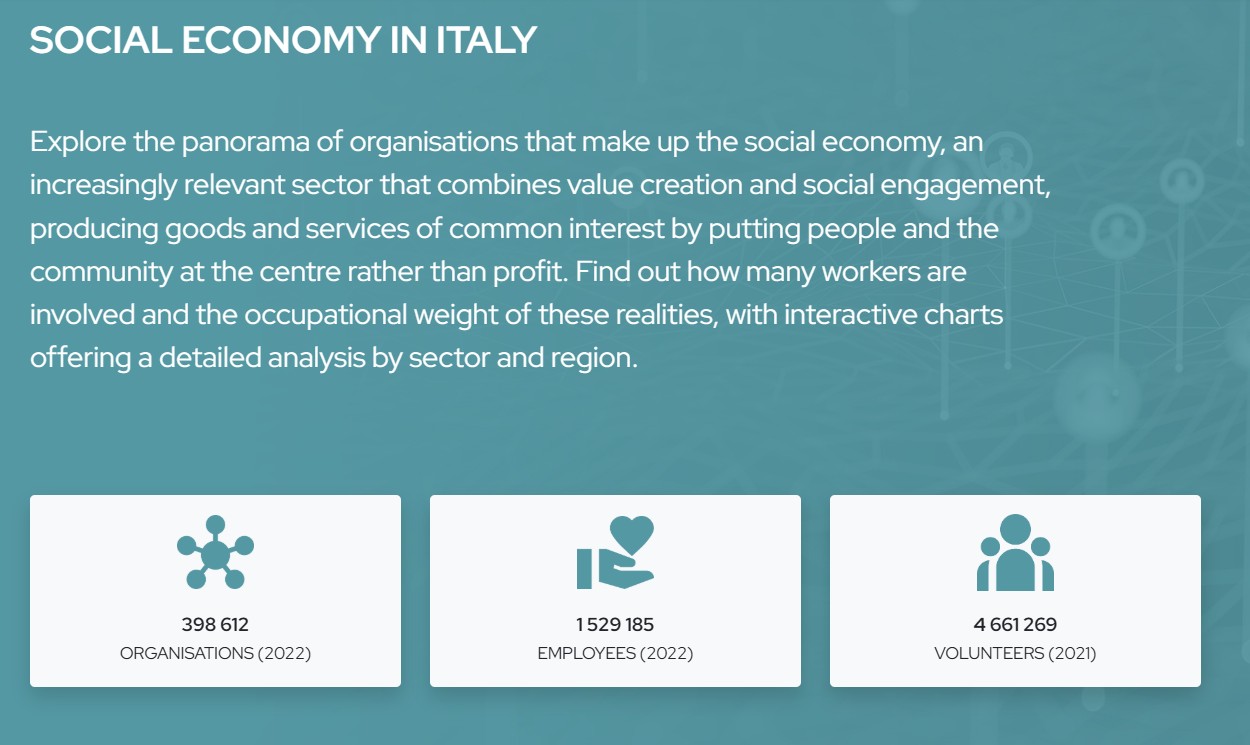The social economy in Italy: a new in-depth webpage
Euricse has published a new in-depth page on the social economy in Italy on its website. Thanks to interactive graphs and official data from authoritative sources, it is possible to explore in detail the number of organisations, employment and their contribution to the national economy.
The information, updated annually, offers a comprehensive analysis and includes two specific sections dedicated to social enterprises and cooperatives.
In Italy, the social economy comprises more than 398,000 organisations, employs more than 1,500,000 people and involves more than 4,660,000 volunteers. These data represent only part of the complete picture, which can be freely consulted on Euricse’s website. Thanks to interactive graphs and intuitive maps, it is possible to explore the different types of organisations – from cooperatives to mutuals, from associations to foundations and social enterprises – with a particular focus on their evolution in recent years. The data are the result of the aggregation of official sources, curated by Euricse researchers, including the Italian Permanent Census of Non-Profit Institutions, ISTAT’s ASIA (Enterprises, Agriculture and Employment) statistical registers, RUNTS and the Register of Cooperatives, managed by the Ministries of Labour and Social Policy, Enterprise and Made in Italy, as well as research databases developed directly by Euricse.
The new webpage is divided into three main areas:
- Key figures: the graphs show the total number of organisations active in the social economy, their level of employment (including workers in cooperatives and other organisations) and their contribution to the national economy, as well as their geographical distribution. By interacting with the graphs, it is possible to select the year of interest, the relevant sectors and the data by region;
- Social enterprises in Italy: this is the section devoted to social enterprises, a cross-cutting element in the social economy. The graphs highlight data on the number of enterprises that have obtained the legal status of social enterprise, their geographical distribution by province, sectors of activity and legal forms adopted;
- The economic value of cooperatives: this last area puts the spotlight on the value of production and added value produced by cooperatives in the various sectors and territories, and on total turnover broken down by cooperative type.
Between 2017 and 2019, Euricse collaborated with ISTAT on two national reports on cooperatives and the social economy. At the international level, the institute collaborated with COPAC and the International Labour Organisation (ILO), contributing to studies and research that led to the definition of the Guidelines for Cooperative Statistics, approved during the 20th International Conference of Labour Statisticians (ICLS). Recently, Euricse prepared a report on behalf of the European Commission that analyses the role of the social and neighbourhood economy ecosystem in the European context, offering the most complete and up-to-date overview available on the sector.
The page can be accessed directly from the home page of the Euricse website or via the menu at the top, by selecting ‘DATA’.
Learn more by visiting the page SOCIAL ECONOMY IN ITALY
